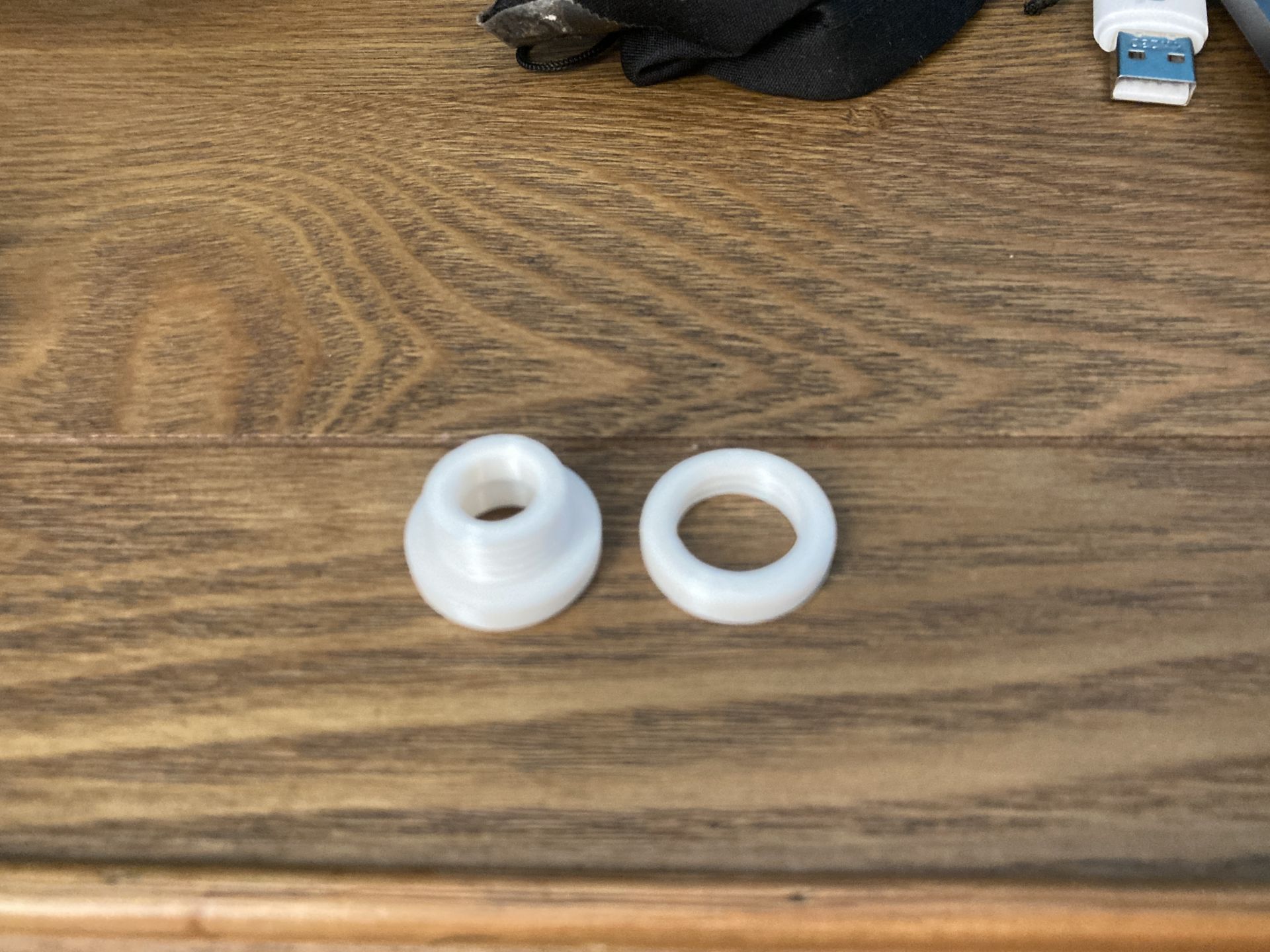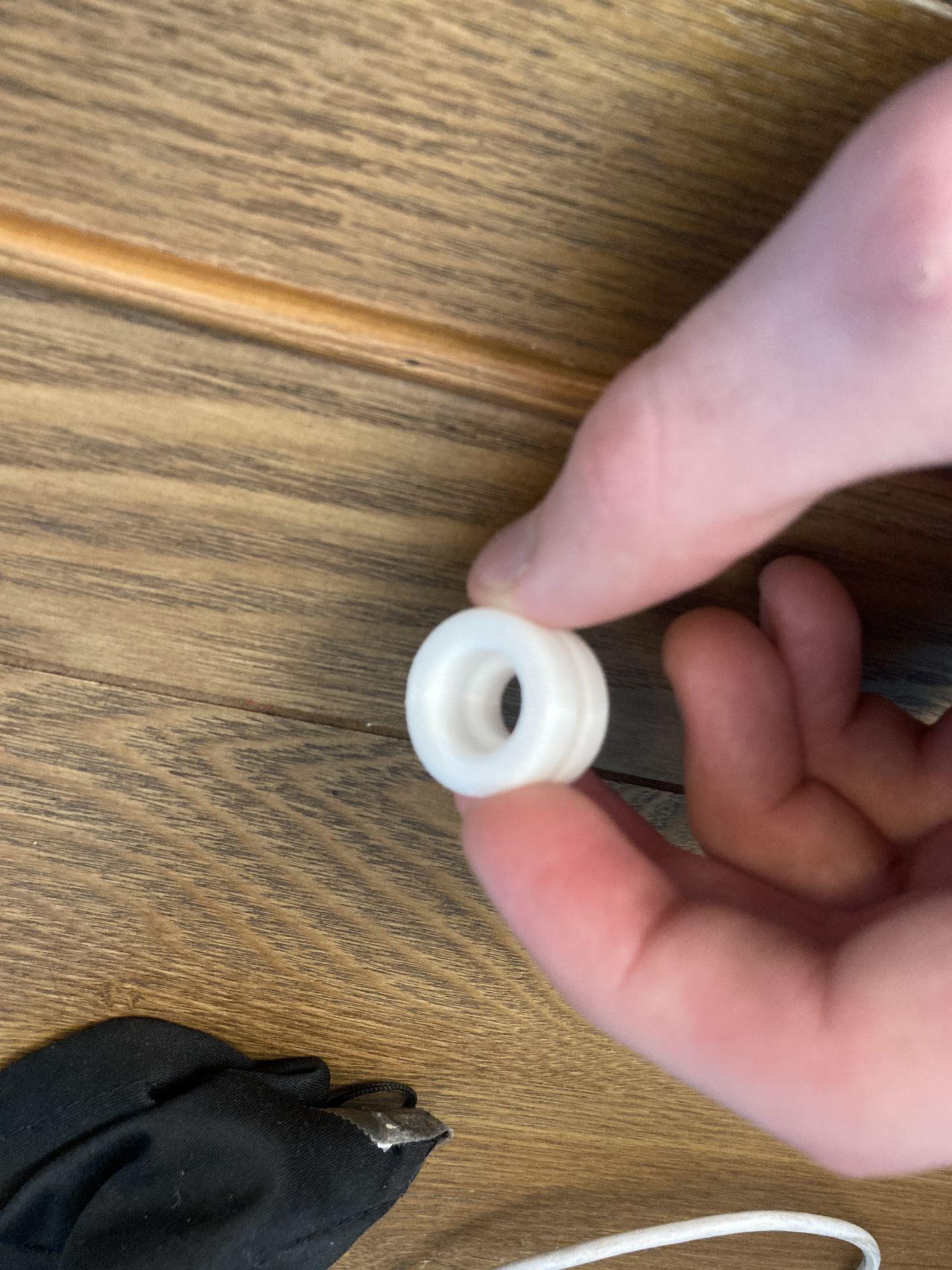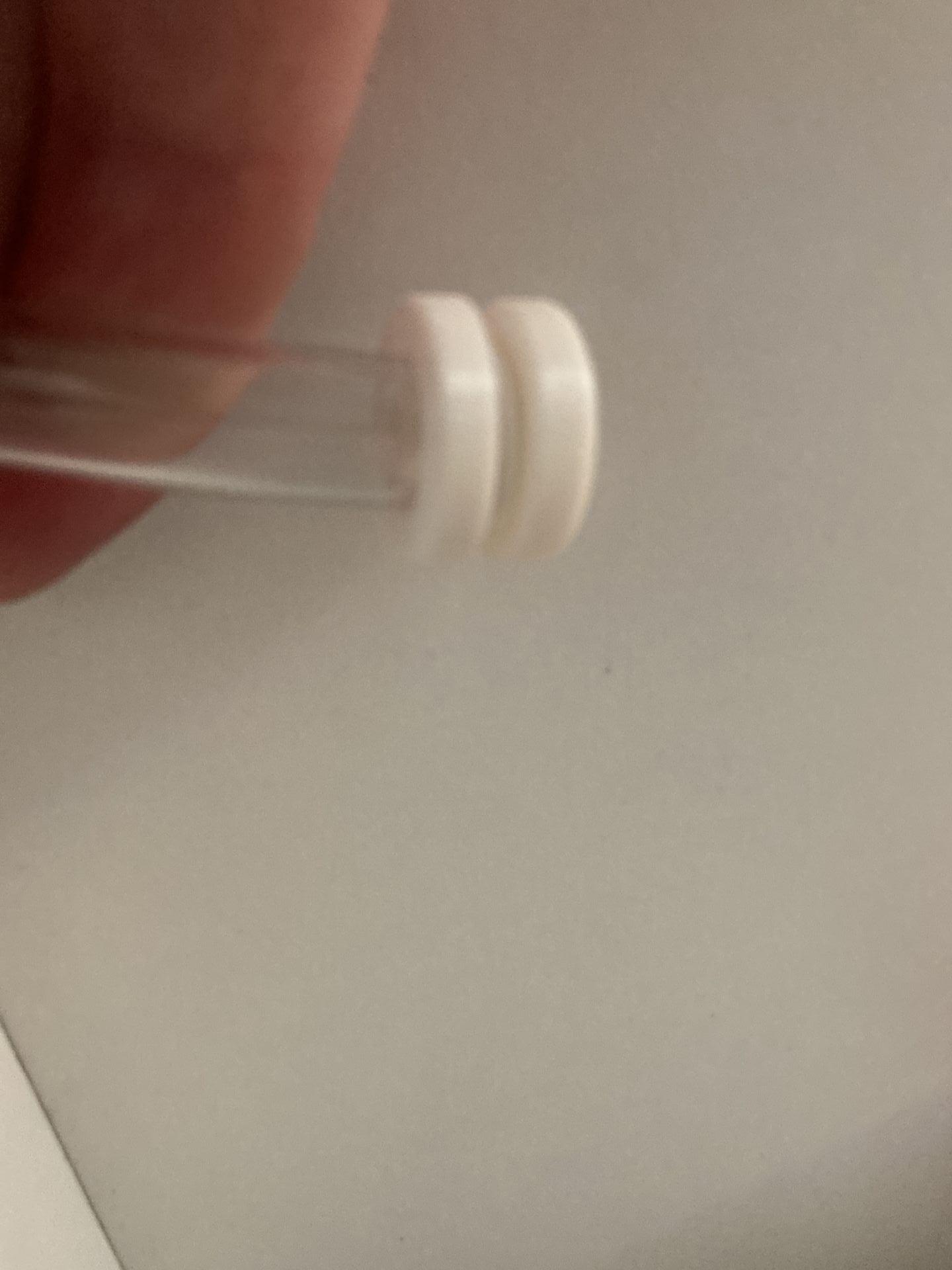So as a lot of you know there is a dual tube port on por amor art that screws into a 16mm hole and allows for both 12.7mm and 9.5 mm (1/2in and 3/8in) outer diameter tubes to be plugged in.
link: https://www.poramora...PSY_Mfxc1cWzP0#.
I like the concept, but I didn't like how bulky the product was, and that it costed $3 per port. Now in the spirit of 3d printing, I wanted to make a nice design to open source for myself and anyone who may want to use their printer to print their own dual tube ports.The finished product is between 2-3g, and for my PLA filament costed me less than 5 cents in plastic and 30min print time for my stock ender 3 v1.



My design is slimmer and has rounded edges around the openings to make insertion of the tube easier. The downsides is that there is less surface area holding the tube, although after testing it with my 12.7mm tubing, it seems to hold just fine. Another downside is that there is a little, not a lot, but a little friction between the bolt and nut. If spun in and out they will kind of sand each other down a little and spin almost normally though. This is because my boolean offset is 0.2mm and my nozzle is 0.4mm. I also tried 0.3mm which is much looser and screws normally, but there will be a bit more play, which probably isn't an issue because it doesn't move when tightened down, but may be for smaller ants. Another downside is in my efforts to make it slimmer, I caused the hole variation to be less accepting, and 20mm holes probably wouldn't be covered (outer diameter is about 22mm and my printer printed it to be 21.8mm).
I'll release the onshape link here where you can export to print, or make some customizations that work better for you. If you have any good or potentially useful design changes for other people please post them in this thread as well. Some ideas that can easily be done are to widen the bolt and nut for a better hold on the plastic, or to make the whole thing taller to provide more surface area for the tube to grip onto. I find this version the best for my purposes atm.
Link: https://cad.onshape....d67a01f78babb79
Edit: Sorry for the poor quality photos, I broke and replaced my phone camera and now it just kind of sucks.
Edited by jabasson, February 3 2025 - 5:40 PM.
















